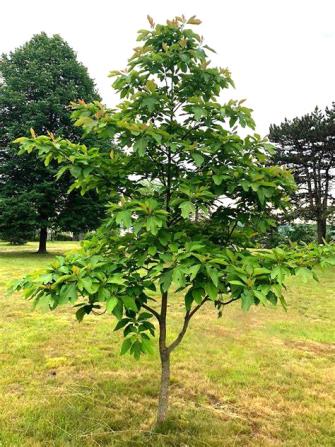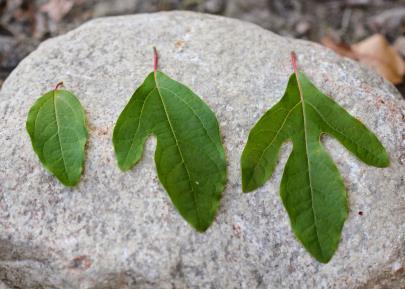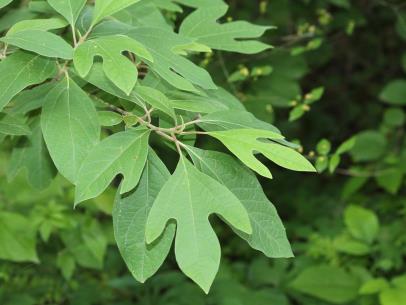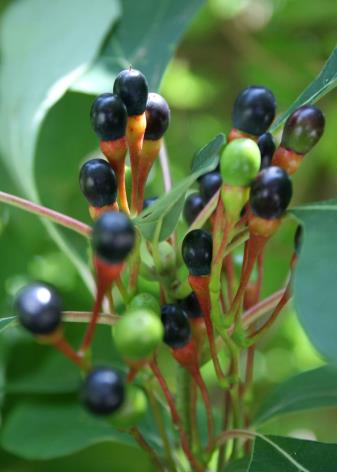
Aromatic leaves are bright green in summer and yellow to orange to brilliant red in fall.1
Dark blue berries on female trees hang from bright red stems in September.1
The name sassafras was derived from the Spanish word salsafras, referring to the tree’s alleged medicinal value. The specific epithet, albidum, refers to the light or whitish color of the undersides of leaves.1
Oil extracts of sassafras roots and bark were used extensively by Native Americans, and the first European explorers felt sure sassafras was the miracle cure-all of the New World.1
The Food and Drug Administration has prohibited the use of oil of safrole and sassafras bark in food, but permits use of edible spices, which contain very small amounts of safrole.1
The sassafras has three different shapes of leaves. You can also identify sassafras trees by crushing the leaves or cutting the bark to see if it exudes a strong citrusy aroma.2
- SASSAFRASS. University of Kentucky College of Agriculture, Food and Environment. https://www.uky.edu/hort/Sassafras. No Publication Date. Accessed December 4, 2023.
- Ozarks Flowering Tree: Sassafras. https://www.ozarkswalkabout.com/ozarks-flowering-treesassafras/. No Publication Date. 2022. Accessed December 4, 2023.
- https://cdn.drweil.com/wp-content/uploads/2016/12/dietnutrition_food-safety_sassafras-tea-safety_2721x1806_000034535442.jpg
- https://th.bing.com/th/id/OIP.nXqtlXOg1LadLGsBJdJ_PQHaJ4?rs=1&pid=ImgDetMain
- https://th.bing.com/th/id/R.48255de333450fc6a047195111ff123d?rik=r1%2bXuEo5tskCTQ&riu=http%3a%2f%2f4.bp.blogspot.com%2fO7wp6biB2iY%2fVLkdfzJbqOI%2fAAAAAAAAFAI%2fFIYHo5XN9yY%2fs1600%2fIMG_7822.jpg&ehk=ogFl7nUtvanlL0kUGMx2Dp7LW9cRMULI2cntKUhZRzA%3d&risl=&pid=ImgRaw&r=0
- https://live.staticflickr.com/2488/3792947810_f1bb074aa5_b.jpg
- https://www.seashoretoforestfloor.com/wp-content/uploads/2019/05/fullsizeoutput_3748.jpeg
- https://www.augustaga.gov/images/pages/N1630/Sassafras%20-%20photo%201.jpg






